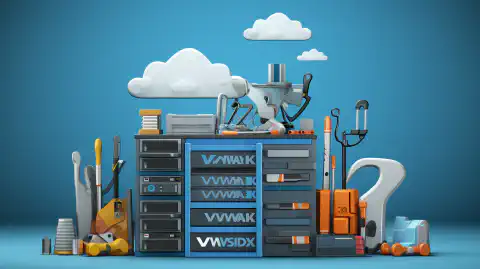Build an Affordable, Secure Home Lab for IT Testing & Learning

Table of Contents
How to Build a Cost-effective and Secure Home Lab for Testing and Learning
Introduction
Building a cost-effective and secure home lab can be an invaluable asset for anyone interested in learning and testing new technologies. Whether you’re an IT professional or a technology enthusiast, a home lab allows you to experiment with various software, hardware, and networking concepts in a controlled environment. In this article, we’ll guide you through the process of creating your own home lab without breaking the bank or compromising security.
Choosing the Right Hardware
1. Virtualization Server
The heart of any home lab is the virtualization server. This is the hardware that will host all of your virtual machines (VMs). When choosing a virtualization server, consider the following factors:
- CPU: Aim for a multi-core processor with hyper-threading capabilities. This will enable you to run multiple VMs simultaneously.
- Memory: Invest in a minimum of 16 GB RAM. The more memory you have, the more VMs you can run concurrently.
- Storage: Opt for solid-state drives (SSDs) over traditional hard disk drives (HDDs) for faster performance and reduced power consumption.
2. Networking Equipment
To connect your home lab to the internet and your local network, you’ll need some basic networking equipment. This includes a switch for connecting devices, a router for internet access, and network cables.
Choosing the Right Software
1. Virtualization Software
The most crucial software component in a home lab is the virtualization software. Popular options include VMware ESXi , Proxmox VE , and Microsoft Hyper-V . These platforms allow you to create and manage multiple VMs on a single host. Choose one that best suits your needs and budget.
2. Operating Systems
You’ll need operating systems (OS) to run on your VMs. There are numerous OS choices available, ranging from free options like Linux distributions to paid options like Microsoft Windows . Select the OS that best aligns with your learning and testing objectives.
Configuring Your Home Lab
1. Network Configuration
A proper network configuration is vital for a secure and efficient home lab. Follow these best practices:
- Use a separate VLAN for your home lab to isolate it from your main network.
- Implement network segmentation to separate VMs with different security requirements.
- Enable firewall rules to restrict inbound and outbound traffic.
2. Virtual Machine Management
Organize and manage your VMs efficiently by following these guidelines:
- Use descriptive names for your VMs.
- Allocate appropriate resources for each VM based on its purpose.
- Implement snapshots to create restore points for your VMs.
Securing Your Home Lab
1. Regular Updates
One of the most critical aspects of maintaining a secure home lab is regularly updating your software. This includes your virtualization platform, operating systems, and any applications you’re running on your VMs.
2. Network Security
Implement robust network security measures to protect your home lab from threats. This includes:
- Using strong, unique passwords for all accounts.
- Enabling two-factor authentication (2FA) for critical services.
- Configuring intrusion detection and prevention systems (IDPS) to monitor network traffic for malicious activity.
3. Backup and Recovery
Establish a backup and recovery plan for your home lab to ensure you can quickly recover from any data loss or system failures. This includes:
- Creating regular backups of your VMs and important data.
- Storing backups in a secure, offsite location.
- Testing your backup and recovery process periodically to ensure it works as expected.
Learning and Testing in Your Home Lab
With your home lab set up, you can now begin learning and testing various technologies. Some popular topics and projects to explore include:
- Networking: Experiment with different network topologies, routing protocols, and firewall configurations.
- Cloud Computing: Learn about Amazon Web Services (AWS) , Microsoft Azure , or Google Cloud Platform (GCP) .
- Operating Systems: Test various Linux distributions, Windows Server, and containerization technologies like Docker and Kubernetes .
- Cybersecurity: Practice ethical hacking, vulnerability scanning, and incident response using tools like Kali Linux , Metasploit , and Wireshark .
Conclusion
Building a cost-effective and secure home lab can be a rewarding experience that offers endless learning and testing opportunities. By carefully selecting your hardware, software, and following best practices for configuration and security, you’ll create a flexible and powerful environment for personal and professional growth.
References
- VMware ESXi: https://www.vmware.com/products/esxi-and-esx.html
- Proxmox VE: https://www.proxmox.com/en/proxmox-ve
- Microsoft Hyper-V: https://docs.microsoft.com/en-us/windows-server/virtualization/hyper-v/hyper-v-on-windows
- Linux Distributions: https://distrowatch.com/
- Microsoft Windows: https://www.microsoft.com/en-us/windows
- Amazon Web Services (AWS): https://aws.amazon.com/
- Microsoft Azure: https://azure.microsoft.com/
- Google Cloud Platform (GCP): https://cloud.google.com/
- Docker: https://www.docker.com/
- Kubernetes: https://kubernetes.io/
- Kali Linux: https://www.kali.org/
- Metasploit: https://www.metasploit.com/
- Wireshark: https://www.wireshark.org/
Disclosure and Affiliate Statement:
Affiliate Disclosure: We may earn a commission from links on this page. These commissions support our website and the content we provide. Rest assured, we only recommend products/services we believe in. Thank you for your trust! Click Here to Learn More






